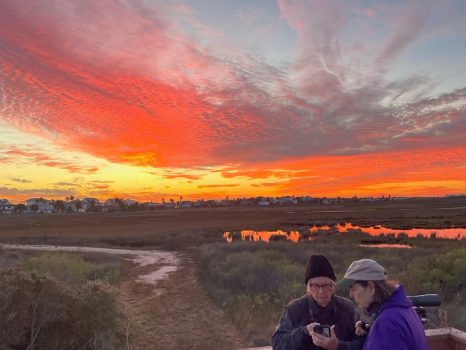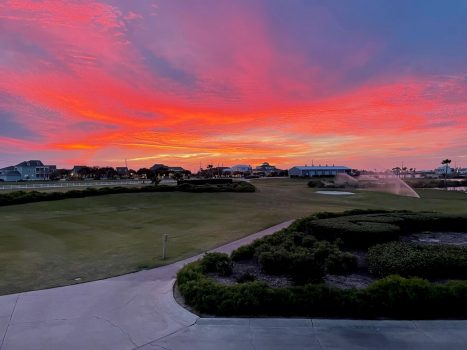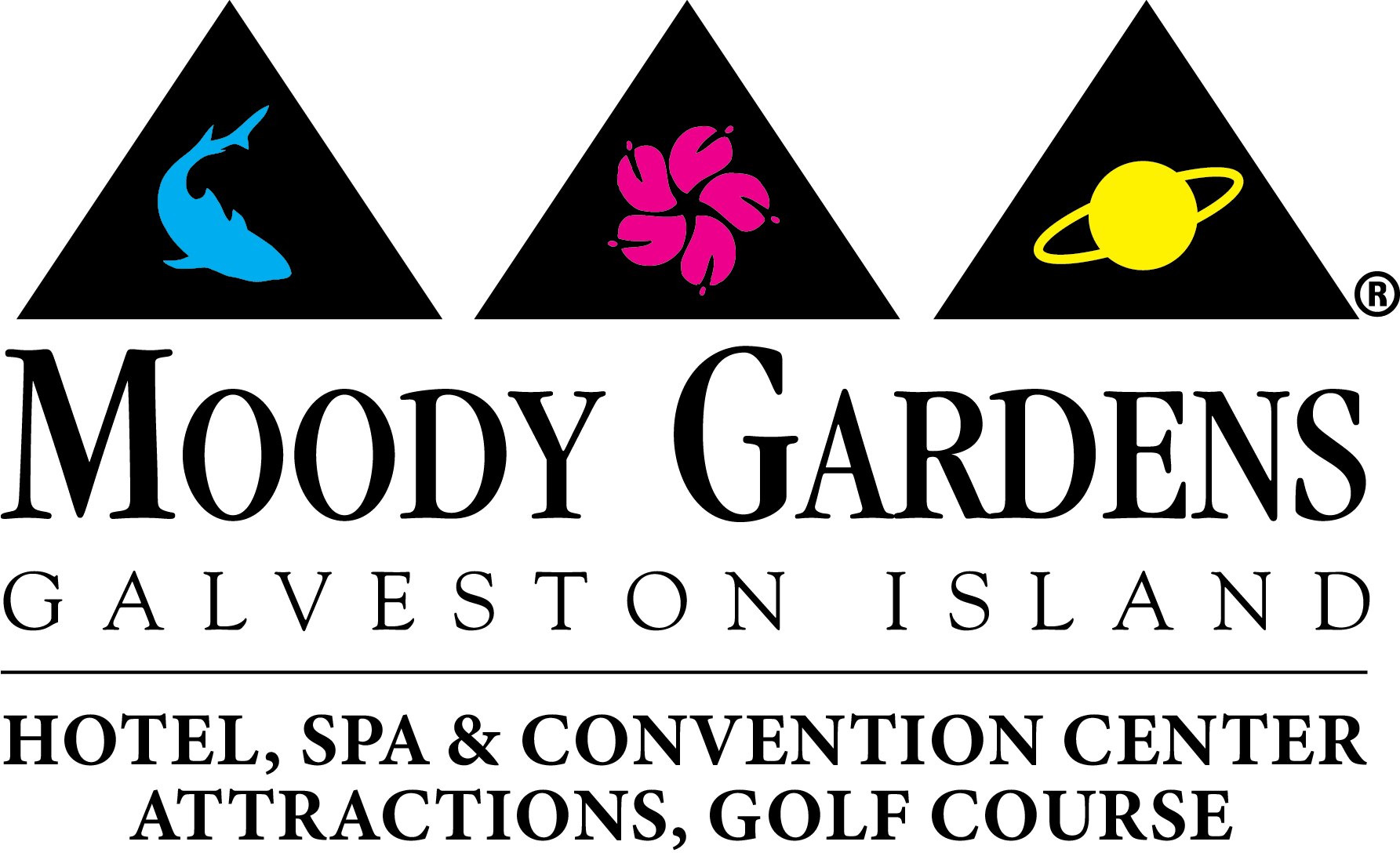On Christmas Day 1900, ornithologist Frank Chapman, an early officer in the newly formed Audubon Society, proposed a new holiday tradition – a “Christmas Bird Census” that would count birds during the holidays rather than hunt them. In the 123 years since, the annual CBC as we now call it, has grown from 27 birders tallying a mere 90 species, to just under 80,000 participants across Canada, the United States, Latin America, the Caribbean and Pacific Islands surveying more than 2600 fifteen-mile diameter circles to record 2244 species, plus 432 hybrids. The citizen science data produced from these collective efforts helps inform conservation strategies around avian population trends.
Galveston boasts 2 circles monitoring our Island; TXGA and TXWG. The older TXGA circle is centered just off the northwest edge of Pelican Island and encompasses habitats from just east of Rettilon Road on Bolivar Peninsula to the west end of Sportsman’s Road (Bay) and Beach Pocket Park #2 (Gulf) here on the Island. The circle extends approximately 3 miles off the seawall and wraps around to include most of Texas City, Bayou Vista, and Tiki Island. This circle was established in 1978 by Dick and Dwight Peake, and we just completed its 46th count on Tuesday, 19 December. It was a resurrection of an earlier CBC circle (TX1W) that was centered about 2 miles west and collected data from 1946 through 1970. TXGA has more water than land and a limited amount of wooded area, but still produces species diversity in the top 20 of all US circles. The picture above was taken at sunrise from the observation platform overlooking Galveston Bay Foundation’s Sweetwater Nature Preserve where our visiting Sandhill Cranes spend their nights. We were there to count them as they woke up to start their day.
Galveston’s West End CBC will be conducted on Tuesday, 2 January, 2024. This newly formed effort is in it’s 5th year under the watchful eyes of Kyle O’Haver and Cynthia Hughes. This circle is centered just northwest of Jamaica Beach in West Galveston Bay. The eastern edge captures Laffite’s Cove Nature Preserve and the western edge is just offshore of the westernmost point of San Luis Pass. A full third of the circle is within the Gulf waters off Galveston Island, and the northern arc of the circle captures a generous swath of mainland agricultural land, marsh and coastal prairie habitat split between Galveston and Brazoria Counties. The circle encompasses most of West Galveston Bay, the mouth of Greens Lake, much of Hall’s Bayou and Chocolate Bayou.
You don’t need to be an expert birder to participate, and all eyes are valued in seeing, counting and tallying what we encounter. It’s a great way to meet folks, see some new and interesting places you might want to bird, and learn a little about identification tips and tricks, photography, compare birding equipment, or who knows where the conversations lead. If you’re interested in spending time enjoying nature while identifying, counting and recording local birds with teams of volunteer citizen scientists, don’t hesitate to send an email to gwhittaker@moodygardens.org. I’ll gladly send you information on these, or other local CBC circles where you might find interest. The Christmas Bird Count season runs from 14 December through 5 January, and there are 26 of them in our local region. Most CBCs wrap up the day with a countdown event where count compilers, area leaders and participants share stories of the day’s adventures, best birds and generally just catch up with fellow birders to celebrate the season. I’ll leave you with our sunset over the same marsh where the Cranes were returning to roost after their day enjoying our Island.


Leave a Reply